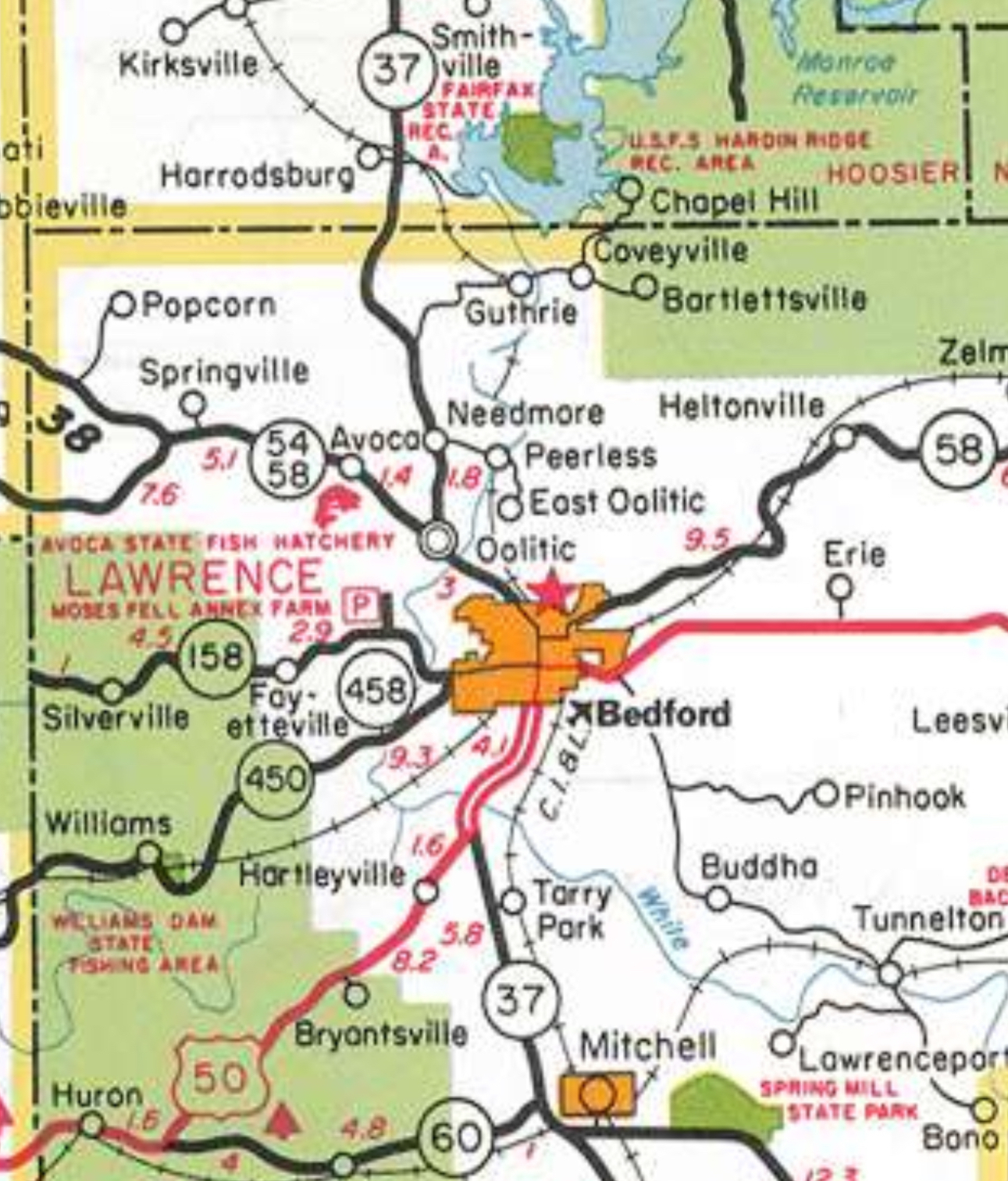Michael Bogdanffy-kriegh—who is always worth reading!—has a good post today on the impact of some recent reading on his exercise patterns. I wanted to highlight one part to make a point somewhat unrelated to his own:
I have decided to focus on getting out of the house and going for walks (mind, body, earth, sometimes community) and winding up at local coffee shops, where I can have direct human-to-human contact (definitely community). Even if that contact is superficial banter with a barista whose name I know and who knows mine, it’s better than the social media app stand-ins we are plagued with. Even if I know no one, and talk to no-one, I am in a space alive with people interacting analog fashion. So that’s it, the coffee shops are my analog version of social media apps. They are way more satisfying.
This sounds lovely and it’s something I would like to do. However, we have a problem in my little town when it comes to walkability or even bikeability.

Take a look at this street map. The first thing you need to know is that Highway 37, the main highway on the west of the map, was built as a new terrain road in the seventies. The old highway 37 had a different route. My understanding of the development of that route through Bedford—which has been confirmed by three helpful posts 1 2 3 by Jim Grey—is as follows:
- Old Highway 37 came south out of Bloomington through Harrodsburg and Needmore into Oolitic.
- It continued south out of Oolitic on what is now Oolitic Road into Bedford on what is now Lincoln Avenue/L Street.
- It continued through Bedford on Lincoln until it came to downtown, at which point it jogged down to O Street/Washington Avenue and left town.
You can see these streets on the map above by looking for the largest north/south streets—and notice that they pass straight through the middle of town. I will say I’m a little surprised that it left town by way of Washington Avenue instead of Mitchell Road but Jim Grey has done a lot more research than I have so I’ll take his word for it. But, in any case, that’s beside the point for now.
You can see from the street map that the streets are clustered around those north-south routes and downtown. Walking and biking—I can say from a lot of experience—is pretty easy around that cluster of streets, so long as you understand that Bedford drivers are not overly concerned about pedestrians and are almost oblivious to cyclists.
Then came the seventies. Much as I love that decade for its movies and music, it created a real problem for Bedford with the building of “new” Highway 37.
Snip of INDOT highway map for 1970, showing the old highway taking the route described above:

And then a snip of the INDOT highway map for 1980, showing “new” Highway 37 passing just to the west of the bulk of the town:

This is why you see in the street map at the beginning of this post that there are three legs extending from the heart of Bedford to “new” Highway 37, i.e., 5th Street, Williams Boulevard, and 16th Street. Because of their connection to Highway 37, these three streets have been the site of most of the development efforts for the last forty years (apart from an effort by Mayor Shawna Girgis a few years ago to revitalize downtown, which did some real, if temporary, good).
And so, with the building of the new highway, downtown withered. Bedford was distended toward the new highway to the west and no subsequent, large-scale development efforts were made to build infrastructure to network and incorporate those roads. Today this means that, starting from downtown (where I live), there is not a network of quieter, safer secondary roads to get to the more developed west side of Bedford on foot or bicycle.
Starbucks is on 16th Street near the highway. Even with the drive-through a shambolic disaster, it stays very busy. There have been other efforts to open local coffee shop competitors but they haven’t lasted—partly because they were downtown and partly because they didn’t have drive-throughs (this is Rachel’s theory and I think she’s right).
It’s not news that cities have been designed for most of the twentieth and twenty-first century around cars. It’s obvious in my town that little attention has been paid to the movement of pedestrians and cyclists through the town. It’s also obvious that the planners for “new” Highway 37 in the sixties and seventies had little regard for what impact the highway would have for the pattern of life in the towns on the route. (And no regard whatsoever, I’m sure, for nonhuman life when they built it as a totally new road.)
So, yeah, I have no new insights here. Just an illustration of how short-sighted planners, who care only about economic impact and disregard human and nonhuman needs for movement, can cause everything from inconveniences to genuine problems, cascading across generations.